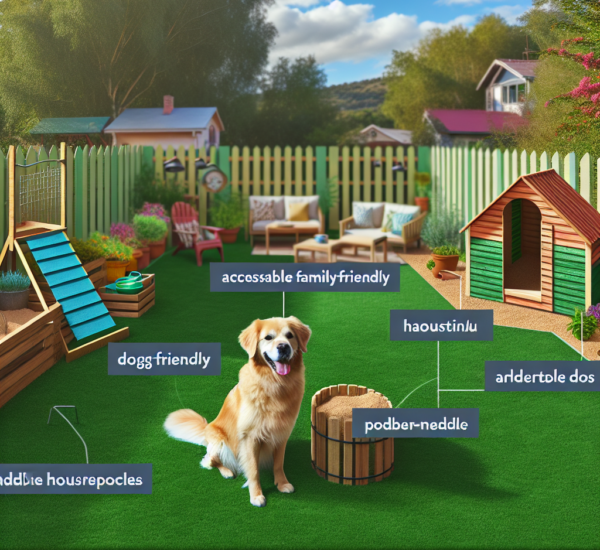Imagine enjoying a peaceful walk in the park with your dog happily exploring nearby, free from the constraints of a leash. Training your dog for off-leash walking can enhance your outdoor adventures, forging a deeper bond while ensuring their safety and discipline. In this comprehensive guide, we’ll explore effective strategies, essential tips, and best practices for successful off-leash training.
Table of Contents
- Why Off-Leash Training Matters
- Pre-Training Preparation
- Basic Obedience Training Essentials
- Building a Reliable Recall Command
- Establishing Boundaries and Safety
- Incremental Exposure to Outdoor Environments
- Tools and Equipment for Off-Leash Training
- Monitoring Progress and Making Adjustments
- Frequently Asked Questions
Why Off-Leash Training Matters
Off-leash training presents various benefits, from providing more exercise and mental stimulation to reinforcing essential commands and building trust between you and your furry friend. Dogs that master off-leash walking tend to display improved behavior, increased responsiveness, and heightened confidence.
Related reading: The Complete Guide to Dog Training Benefits
Pre-Training Preparation
Before embarking on off-leash training, evaluate your dog’s current obedience level, temperament, and health. Ensure your pup responds to basic commands like “sit,” “stay,” and “come.” Additionally, use a checklist for first-time dog owners to gauge readiness. Consulting with a veterinarian could also help address any physical conditions that may affect training.
Basic Obedience Training Essentials
Mastering basic obedience is a prerequisite for off-leash training. Essential commands include “sit,” “stay,” “heel,” and “recall.” Focus on consistent practice, incorporating positive reinforcement techniques such as treats and praise.
Heel Command
The heel command is fundamental for ensuring your dog stays close in distracting environments. Practice on-leash by using rewards whenever your dog maintains a position at your side.
Recall Command
Next, teach your dog to return to you upon call. Use a long leash initially, practicing in a secure area to reinforce the behavior with rewards.
Building a Reliable Recall Command
The recall command is paramount for successful off-leash walking. To strengthen this response:
- Begin in a controlled environment and use a consistent cue or whistle.
- Gradually introduce distractions, rewarding immediate responses.
- Vary rewards—treats, play, and affection can maintain enthusiasm.
Establishing Boundaries and Safety
Setting boundaries is crucial to maintaining safety in diverse settings. Use clear visual markers like trees and paths as natural boundaries, and reinforce your dog’s responsiveness to these limits.
If safety concerns arise, consider enrolling in an off-leash training course for specialized guidance under professional supervision.
External resource: How to Find a Good Dog Trainer
Incremental Exposure to Outdoor Environments
Gradually exposing your dog to different outdoor settings can enhance comfort and familiarity. Start with quiet, fenced-in areas, progressively moving to busier environments as confidence builds. Monitor your dog’s body language for signs of stress, and always adhere to local leash laws where applicable.
Tools and Equipment for Off-Leash Training
Having the right gear can significantly influence training success. Consider investing in:
- Durable, adjustable harnesses for comfort and control.
- High-quality leashes, including long lines for practice.
- Clickers for clicker training methods.
Monitoring Progress and Making Adjustments
Tracking your dog’s progress ensures tailored adjustments to the training process. Maintain a journal documenting successes, challenges, and any behavioral changes observed during sessions.
Be patient and adapt techniques as necessary—each dog learns at its own pace, and acknowledging small victories can make a significant difference.
Frequently Asked Questions
How long does it take to train a dog for off-leash walking?
Training duration varies per dog, based on age, temperament, and previous training. Generally, expect several weeks to months of consistent practice.
Can all dogs be trained for off-leash walking?
While most dogs can be trained off-leash, some breeds or individuals may struggle with recall due to instincts or temperament. Evaluate readiness accordingly.
What should I do if my dog runs off during training?
Stay calm, avoid chasing, and use a familiar recall cue. Encourage return with incentives, and reassess the environment or distractions triggering the behavior.
Want to learn more about dog training? Visit our Dog Training Tips page for additional resources.
Conclusion
Training your dog for off-leash walking is an enriching journey that enhances your adventures while strengthening your bond. With patience, the right techniques, and a dedicated approach, you’ll both enjoy more freedom and trust in outdoor settings. Remember, the most successful training is rooted in consistency and positivity. Happy adventures!




